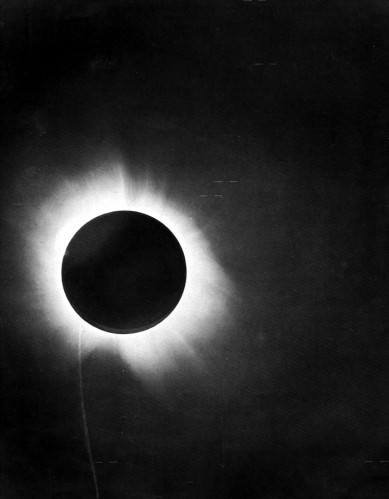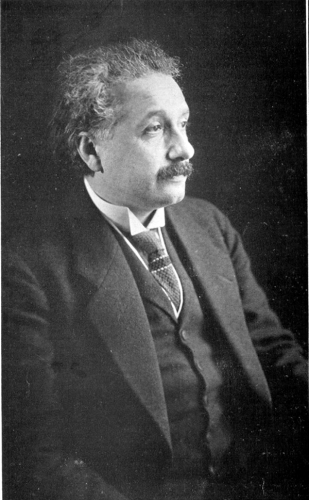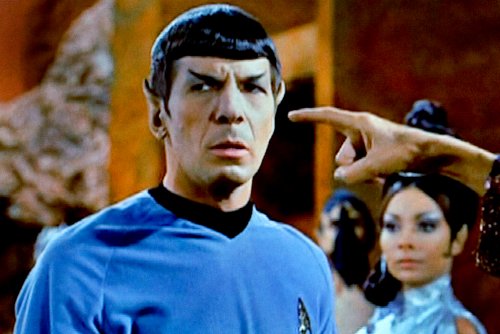|

|
At the turn of
the century (19th to 20th), scientists had
thought they had the universe pretty well figured out.
Newtonian physics was strongly entrenched, describing the
motion of objects in the heavens and on earth like clockwork.
A bolster to this Newtonian worldview was the discovery of
the 8th planet in our solar system - Neptune.
In the mid 19th
century, Uranus, then the farthest known planet from the Sun,
displayed unexpected changes in its orbit.
In 1845 – 46, French astronomer, Urbain Le Verrier, deduced
that these perturbations were due to the gravitational pull of a
more distant, yet unknown, planet.
Le Verrier transmitted his calculations to a German
astronomer, Johann Galle, who, when observing, located this new
planet in a matter of hours. Score
another one for Newtonian physics!
Flush from the
victory of discovering the 8th planet, Le Verrier tackled
another mystery – the unexplained anomalies of Mercury’s orbit. If
Newton’s law of gravitation was correct (and predicting the
existence of Neptune seemed to be concrete proof that it was), Le
Verrier postulated that some planet inside Mercury’s orbit
disturbed it. Le Verrier
suggested the name of this hidden planet as Vulcan, after the
Roman god of fire.
As Vulcan would, in theory, be closer to the Sun than Mercury, it
would be very difficult to see from the Earth.
Viewing would be possible during a total solar eclipse, when
any sizable object near the Sun could be more easily seen whereas it
wouldn’t be detected otherwise.
But total eclipses were infrequent and only lasted for a few
minutes.
Another opportunity would be a transit, when Vulcan would pass
directly between the Earth and Sun, appearing as a dark circle on
the Sun’s surface, moving rapidly from west to east in a straight
line. Since the time of
transit for a planet could not be predicted until its orbit was
accurately known, the first sighting must be by luck.
In 1845, French amateur astronomer, Dr. Lescarbault had observed
a dark object against the Sun, which he later felt must have been
Vulcan. From
Lescarbault’s observation, Le Verrier estimated that Vulcan’s
distance from the Sun was about a third of Mercury’s and it must
have a period of revolution about 19.7 days.
He estimated the diameter of Vulcan to be a little over half
the diameter of our Moon and a mass of one-fourth that of our Moon. Though
not large enough to explain all of Mercury’s perturbations, Vulcan
might be part of an asteroid belt, similar to the one between Mars
and Jupiter.
With these proposed orbital parameters, the only time Vulcan
could be seen in the sky in the absence of the Sun would before
sunrise or after sunset at ten-day intervals.
The bright twilight would make the sightings difficult; hence
that explained why Vulcan had not been detected for so long.
Le Verrier calculated the times of future transits and
astronomers began watching for them.
Unfortunately, astronomers did not find Vulcan where it was
supposed to be. Reports
came in of sightings of Vulcan from time to time.
In each case, a new orbit was calculated and new transits
predicted, yet nothing concrete came of it.
Therefore, the existence of the planet Vulcan was being
questioned – some astronomers insisted it was real, others denied
it. When Le Vierrier
passed away in 1877, however, he firmly believed in Vulcan’s
existence.
In 1878, a solar eclipse passed over the western United States as
American astronomers engaged, again, in the search for Vulcan.
Most of the observers saw nothing, but two astronomers
reported sightings. The
deduced attributes of Vulcan, though, could not account for the
perturbations of Mercury. Also,
the disputed accuracy of Vulcan’s location was insufficient to
calculate its orbit. Hence,
without reasonable ephemeris, the observations could not be
repeated.
At the turn of the century (19th to 20th),
photography was coming of age, so that astronomers could take
photographs and study them at their own pace.
The objects observed inside Mercury’s orbit were so dim and
calculated to be so small that they could not account for the
perturbations of Mercury – which steadfastly flaunted Newton’s
Laws. Vulcan still
eluded the astronomers and the mystery of Mercury continued.
|
|

|
Finally, Einstein literally entered into the equation.
Yet, Einstein’s resolution of the Mercury anomalies was
totally unexpected.
In 1915, Albert Einstein solved the mystery in his General
Theory of Relativity. In
General Relativity, gravitation was an extension of Newton’s laws,
which simplified to Newton’s laws under most conditions.
It was only in the extreme that Newton’s laws break down
and Einstein’s equations provide a better model.
And Mercury’s orbit, which was so close to the Sun, was one
of those extremes.
Einstein’s equation E = mc2 put
forth the equivalence of a large amount of energy to a small
quantity of matter. The
enormous energy of the Sun’s gravitational field interacting with
nearby Mercury was equivalent to the mass of a small planet.
Einstein’s calculations showed that the effect of the
Sun’s gravitation field accounted for the perturbations of Mercury
as well as smaller perturbations of planets farther out.
Since this revelation, most astronomers have abandoned the search
for Vulcan. A few,
however, were convinced that not all the alleged observations of
Vulcan were unfounded. Some
still believe that objects inside Mercury’s orbit may exist, such
as previously unknown comets or small asteroids. Today,
the search continues for the so-called Vulcanoid asteroids, which
may exist in the region where Vulcan was once sought.
Einstein’s theory of General Relativity seemed to have
vanquished the hidden planet Vulcan from our solar system – for
now. Yet, as long Star
Trek is in our consciousness, the home world of Mr. Spock will
live long and prosper!
|




